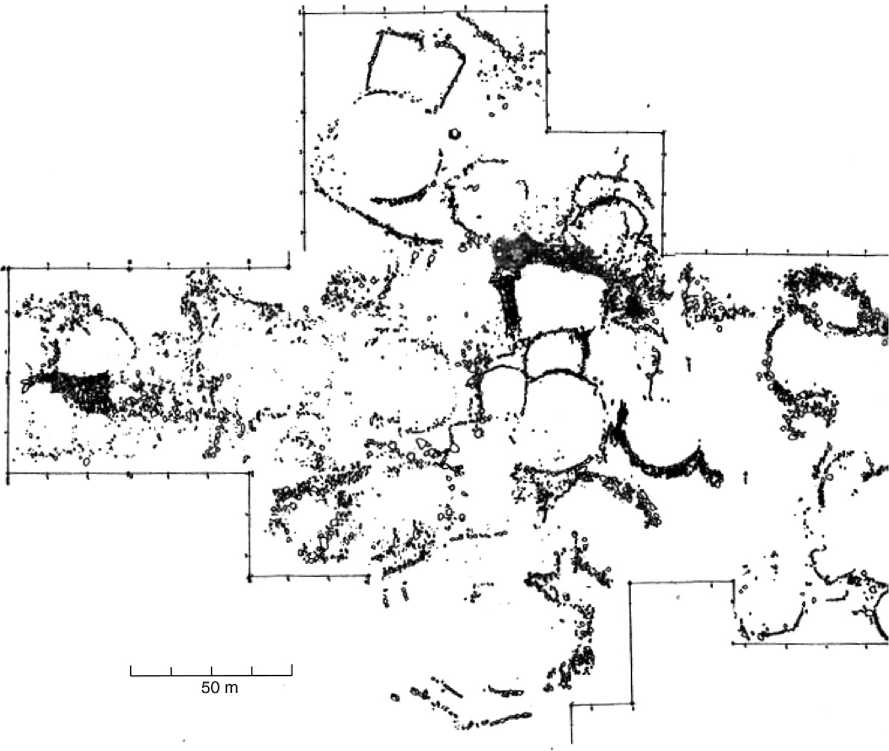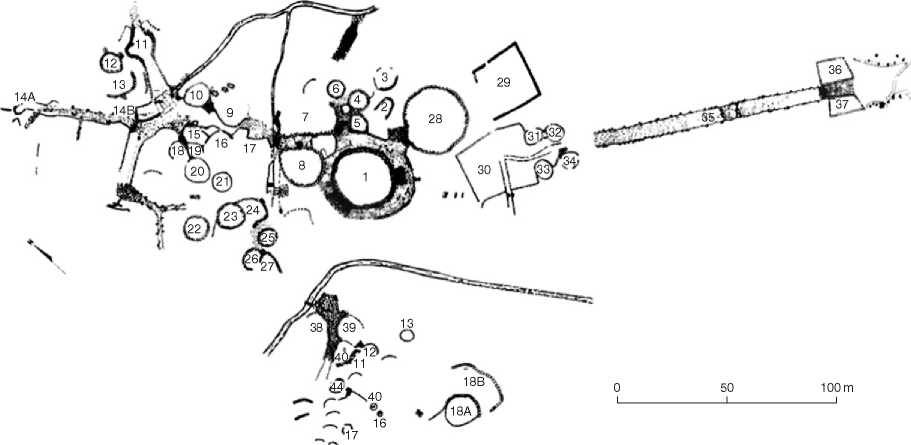The results of archaeological, linguistic, and genetic research to date in Lower Central America point to cultural continua over much of the area from a

Figure 13 A large ceremonial metate with human trophy heads carved around the perimeter of the sculpture. From Stone DZ (1972) Pre-Columbian Man Finds Central America. Cambridge: Harvard University Press.

Figure 14 A plan view of a portion of the Rivas site, Gran Chiriqut, Costa Rica showing the use of boulders on the edges of house mounds, plazas, and other enclosures. Adapted from Quilter J (2004) Cobble Circles and Standing Stones: Archaeology at the Rivas Site, Costa Rica. Iowa City: University of Iowa Press. Reproduced with permission.

Figure 15 A plan view of the Guayabo de Turrialba site showing cobble-faced house mounds, cobble-delineated enclosures, paved causeways, and artificial watercourses. From Fonseca ZO (1981) Guayabo de Turrialba and its significance. In: Benson E (ed.) Between Continents/Between Seas: Pre-Columbian Art of Costa Rica, pp. 104-111. New York: Harry N. Abrams, Inc. Reproduced with permission.
Common source, presumably the Paleoindian Clovis culture that once existed throughout the area over 12 000 years ago. The increase in population, decrease in mobility, increased reliance on local plant resources, and the addition of cultivation to the subsistence base all fostered divergent cultural trajectories in different subregions of CA. The archaeological cultures of Gran Cocls; and Gran Chiriqui, for example, are clearly differentiated by at least 6000 BC. By the sixteenth century, Gran Cocls; and Gran Chiriqui and all other Lower Central American subregions held numerous autonomous polities, oftentimes speaking mutually unintelligible languages, yet they remained valid cultural areas. This suggests that groups within each subregion interacted with each other to a greater extent than with groups in neighboring subregions. Nonetheless, Central American populations embraced new technologies from outside the region, including agriculture, ceramics, metallurgy, shell and lapidary arts, while preserving their cultural traditions.
See also: Americas, Central: Classic Period of Mesoamerica, the Maya; Early Cultures of Middle America; Postclassic Cultures of Mesoamerica; The Olmec and their Contemporaries; Americas, South: Northern South America; Paleoenvironmental Reconstruction in the Lowland Neotropics; Plant Domestication.




 World History
World History









